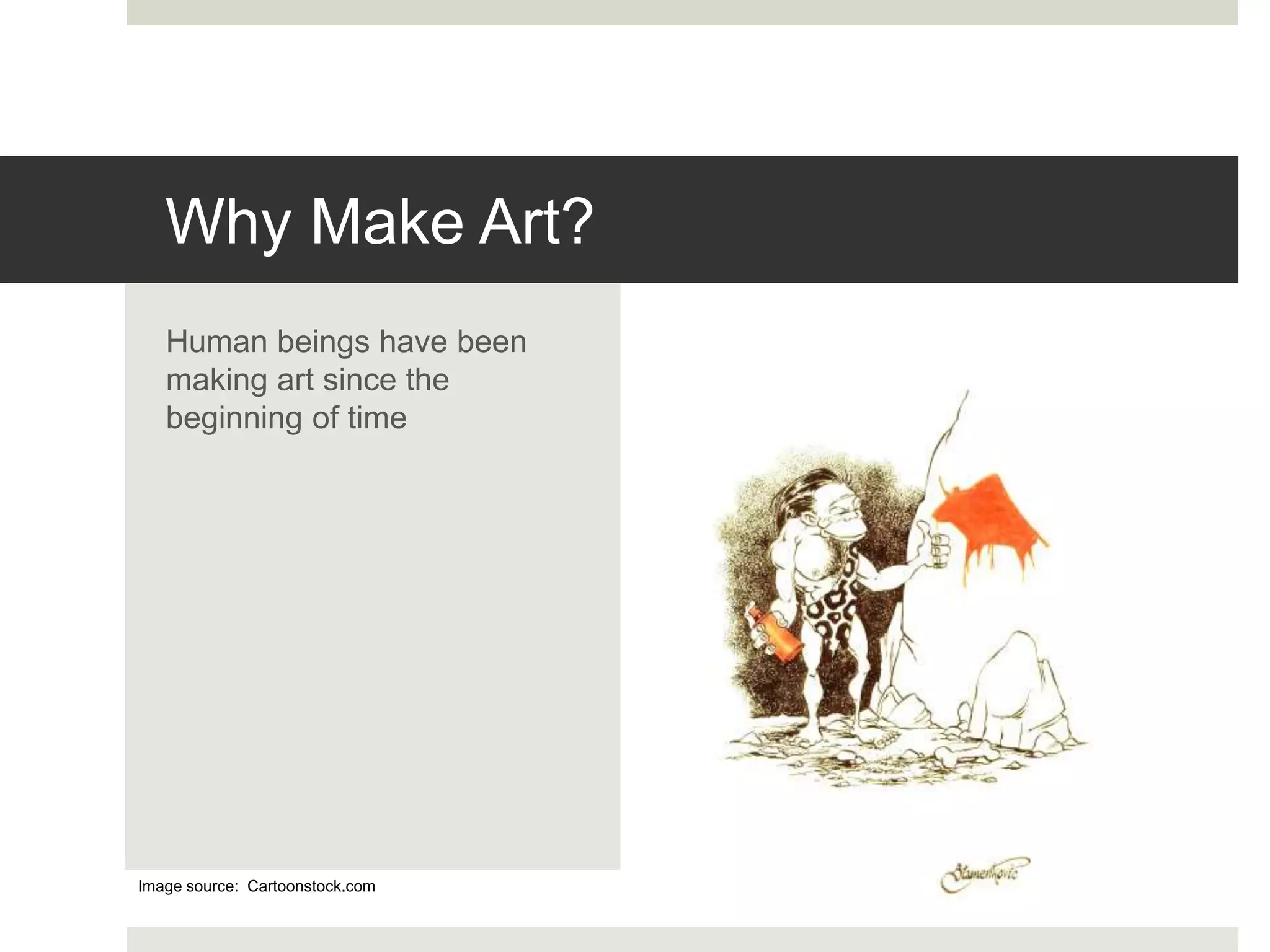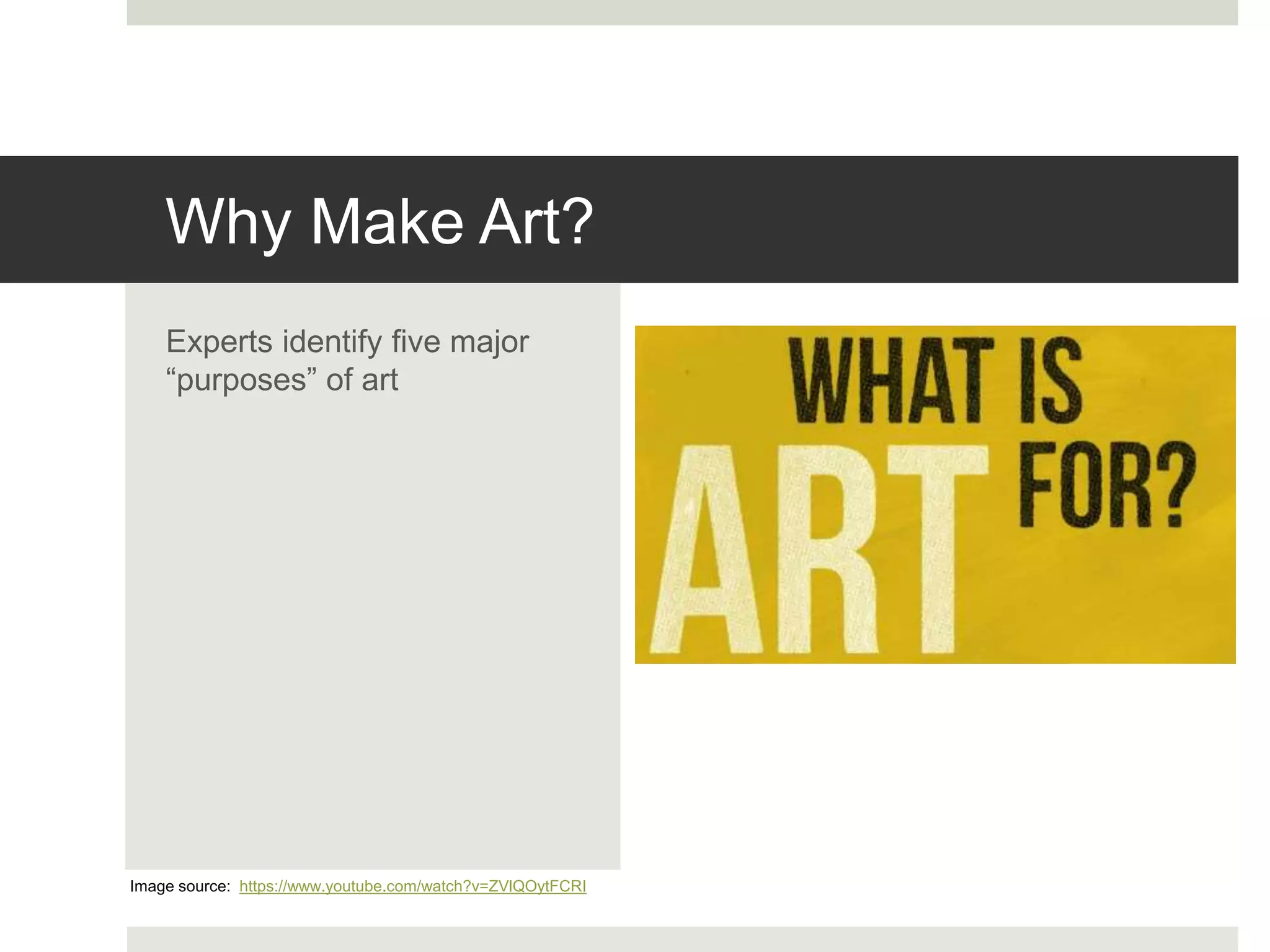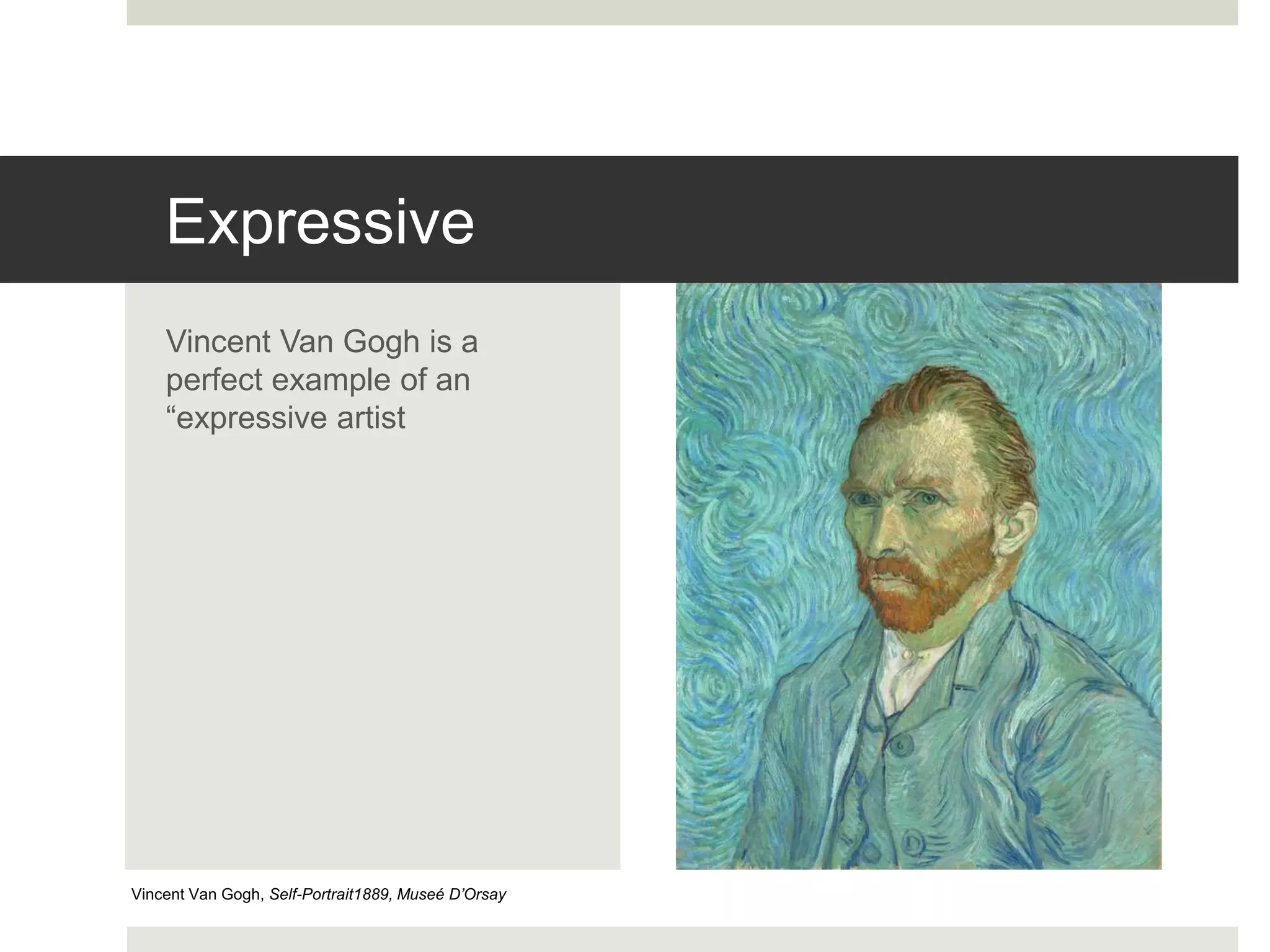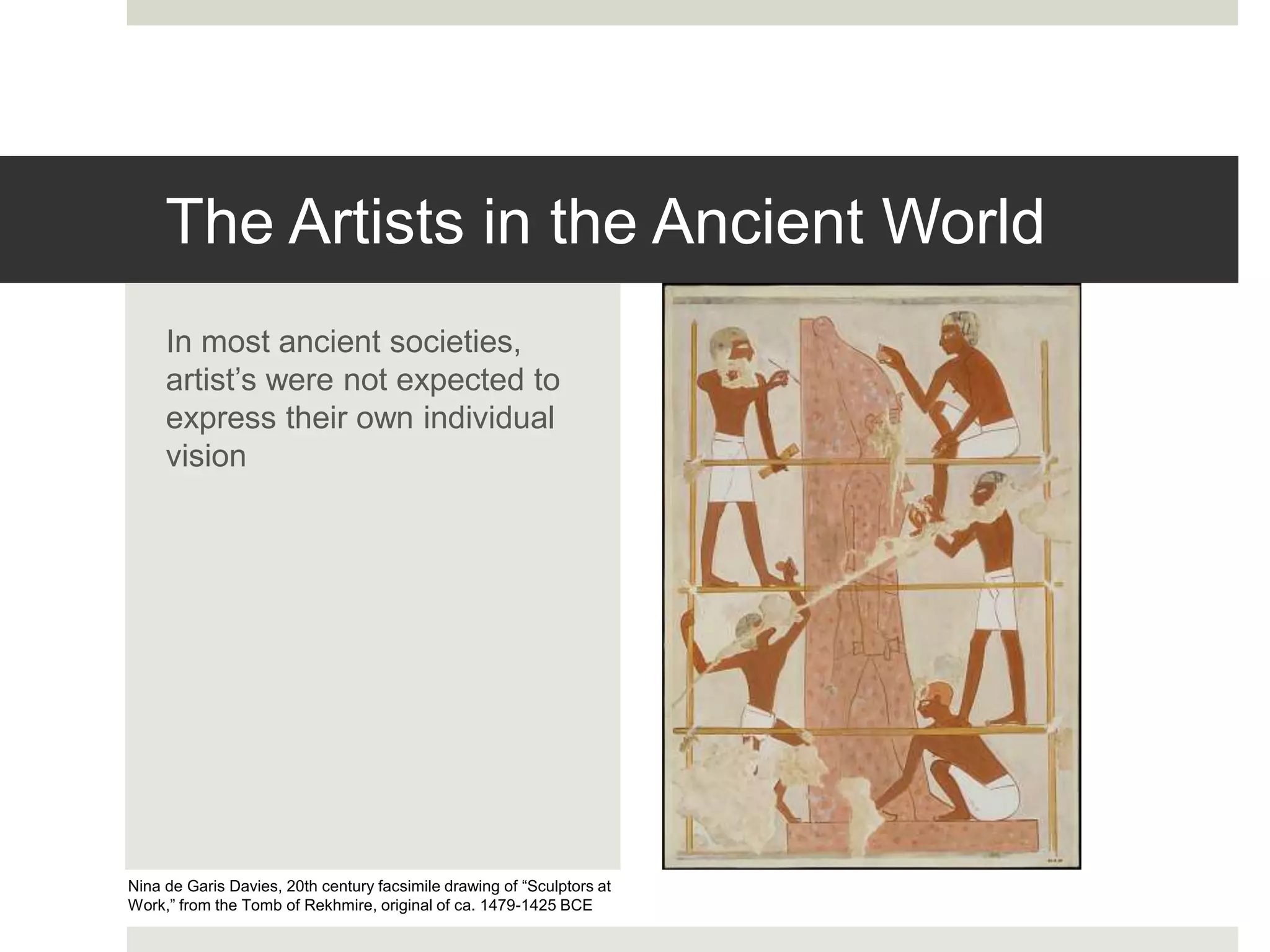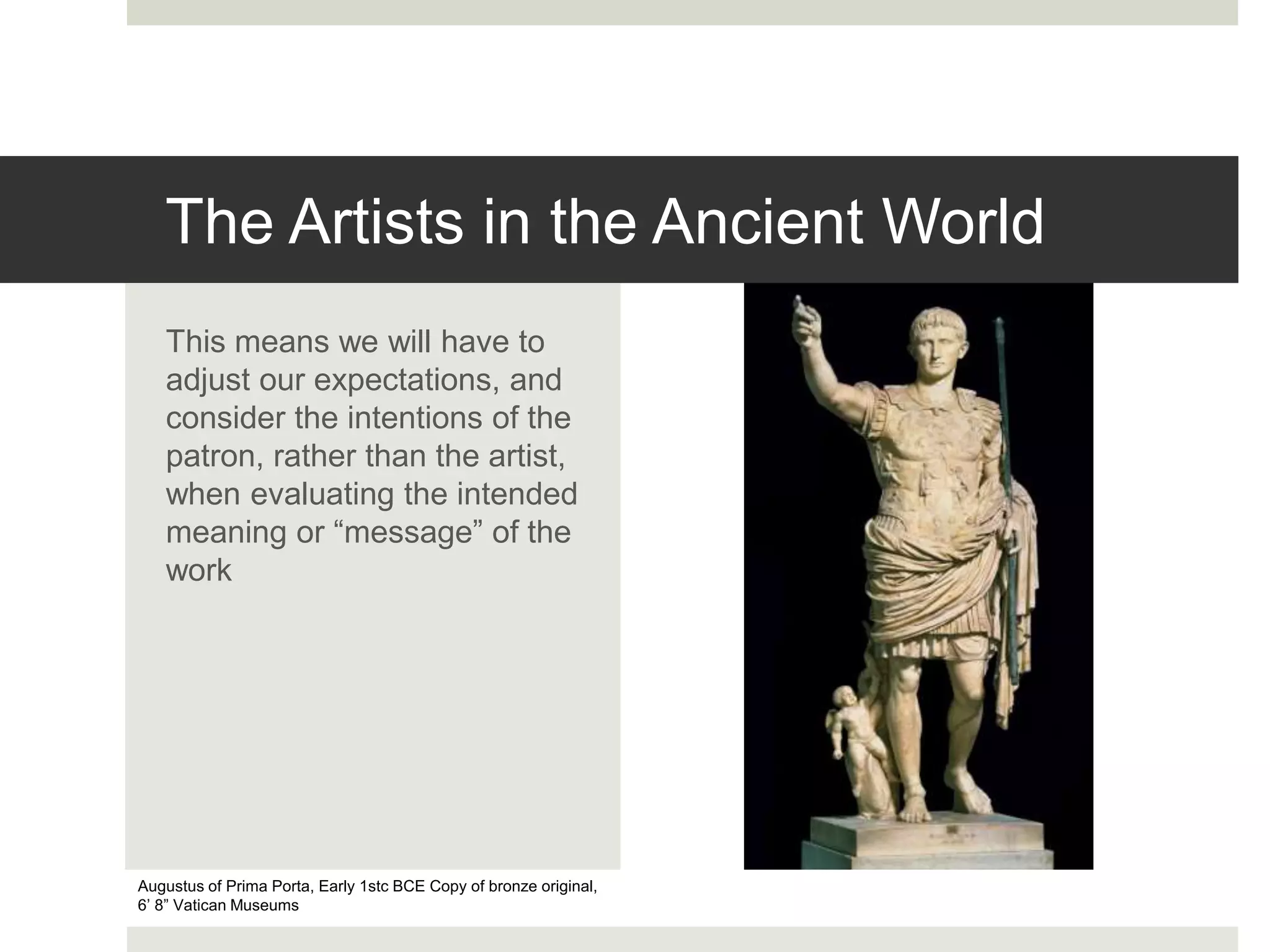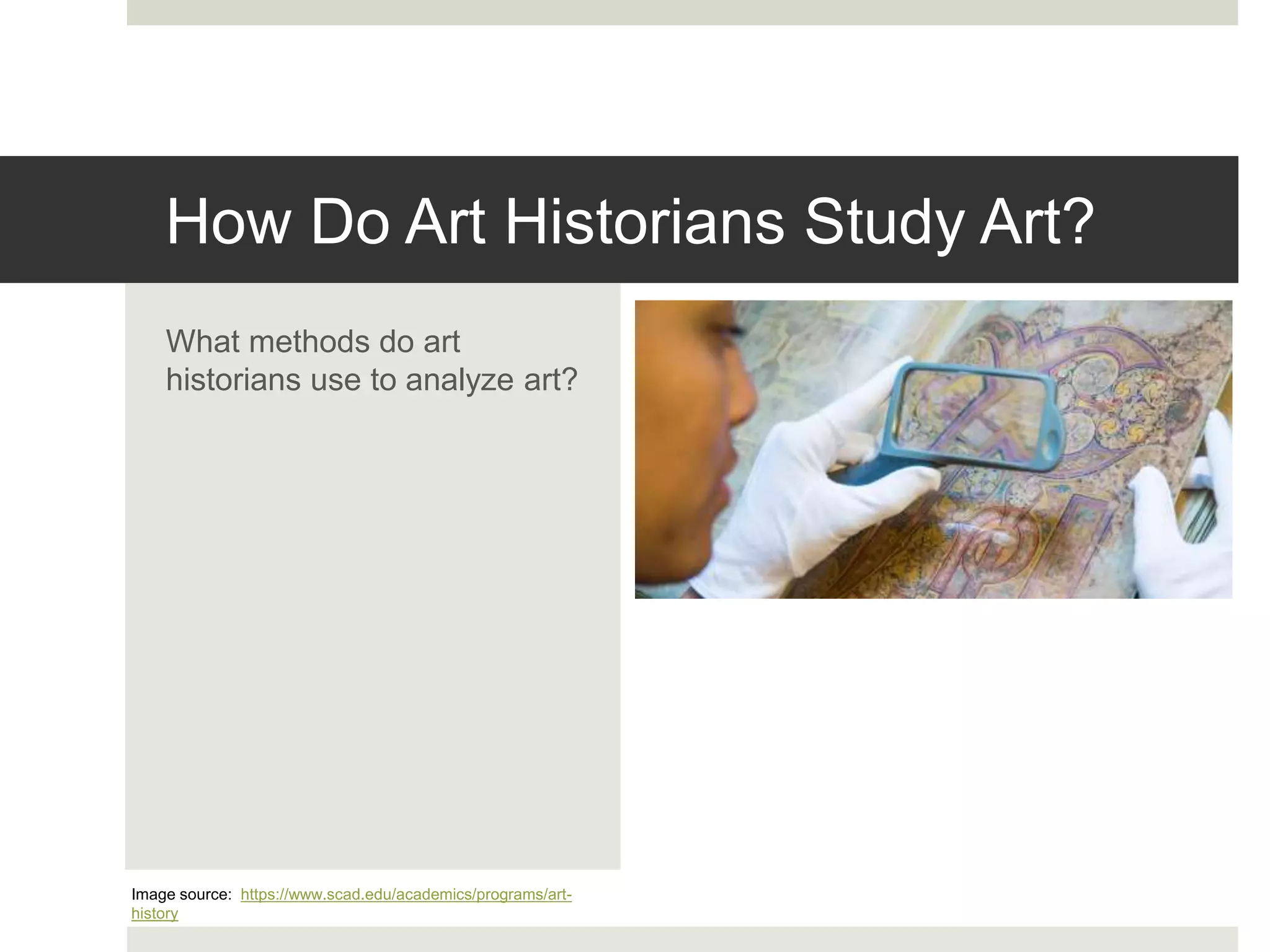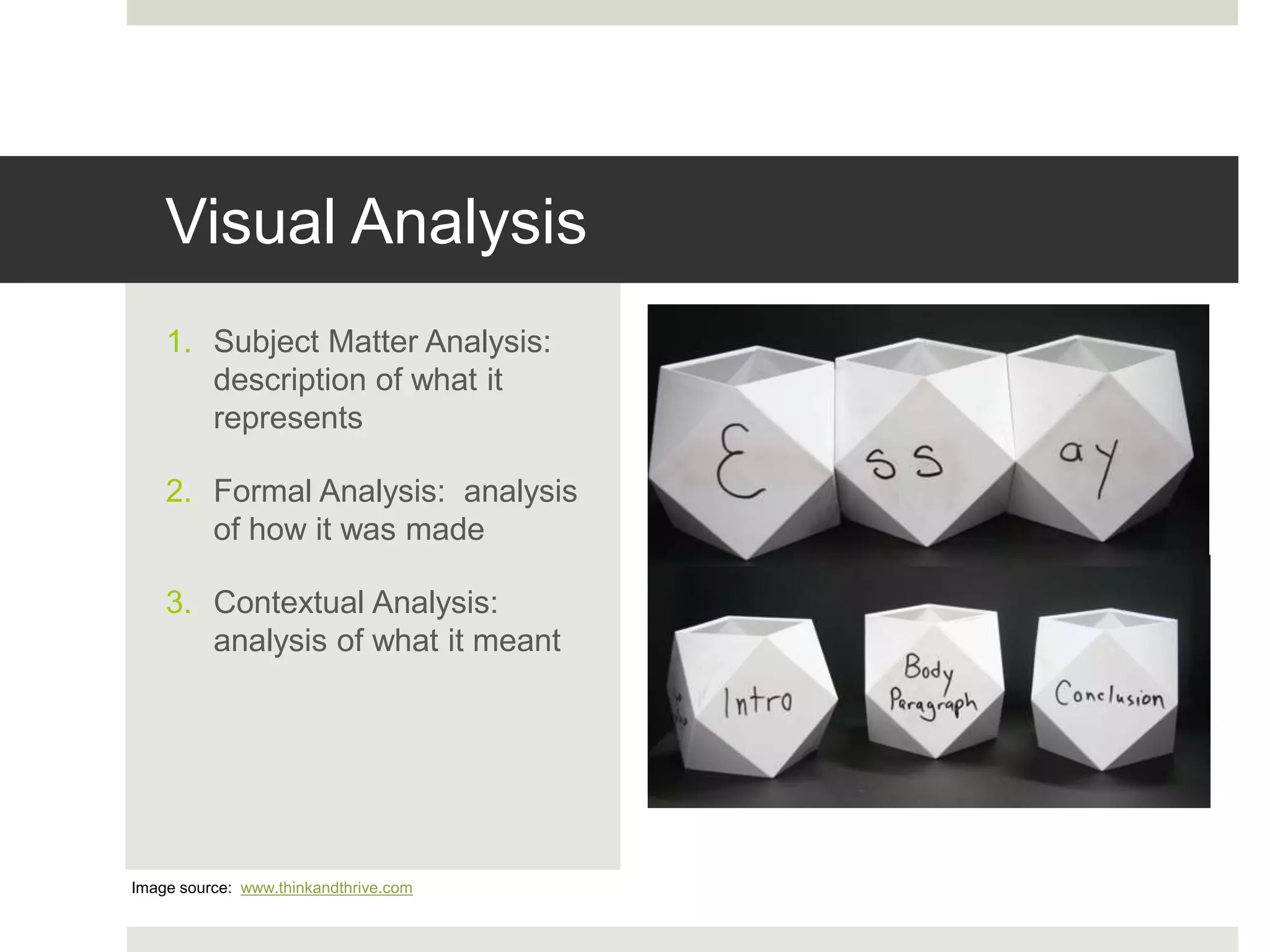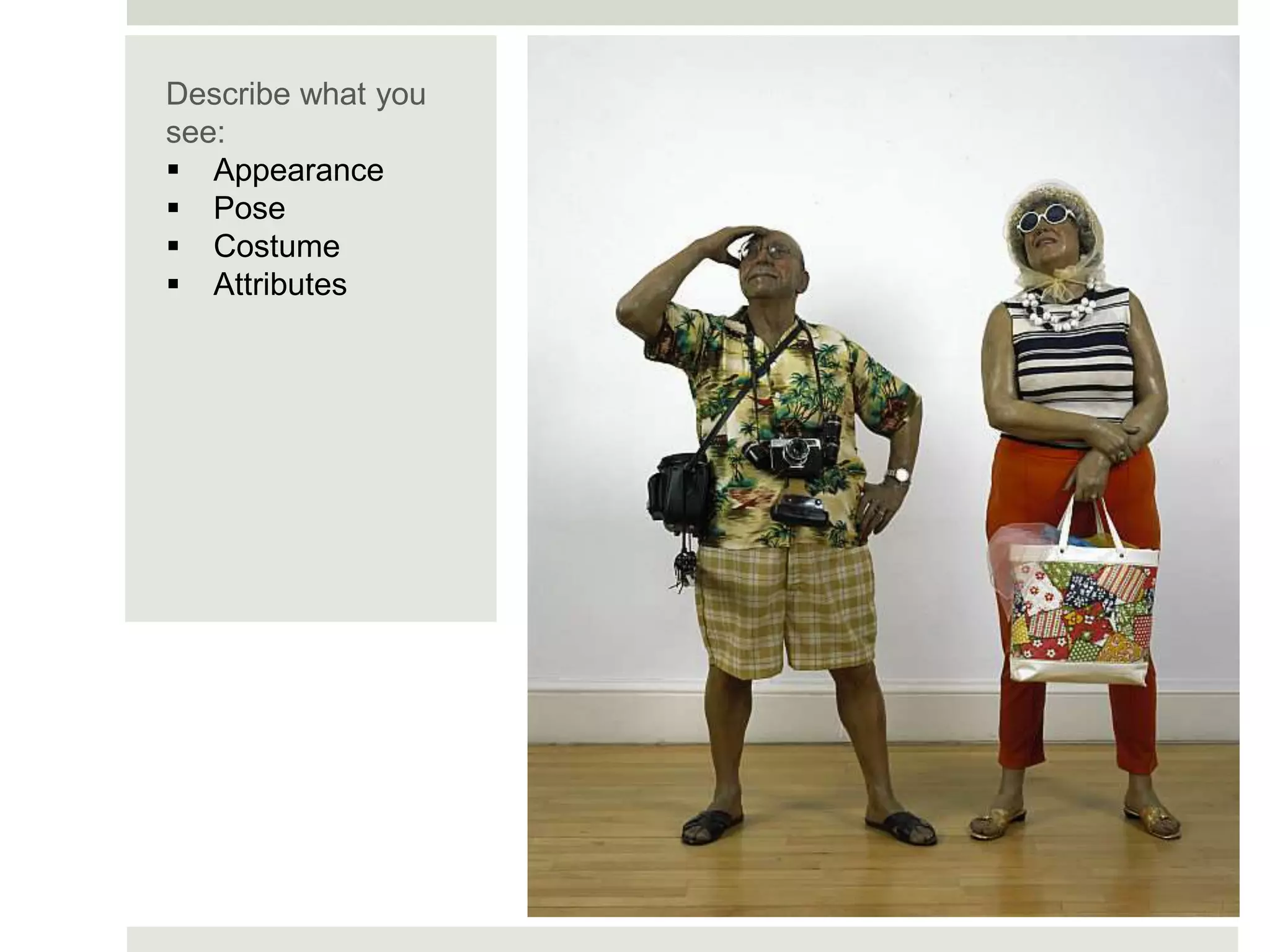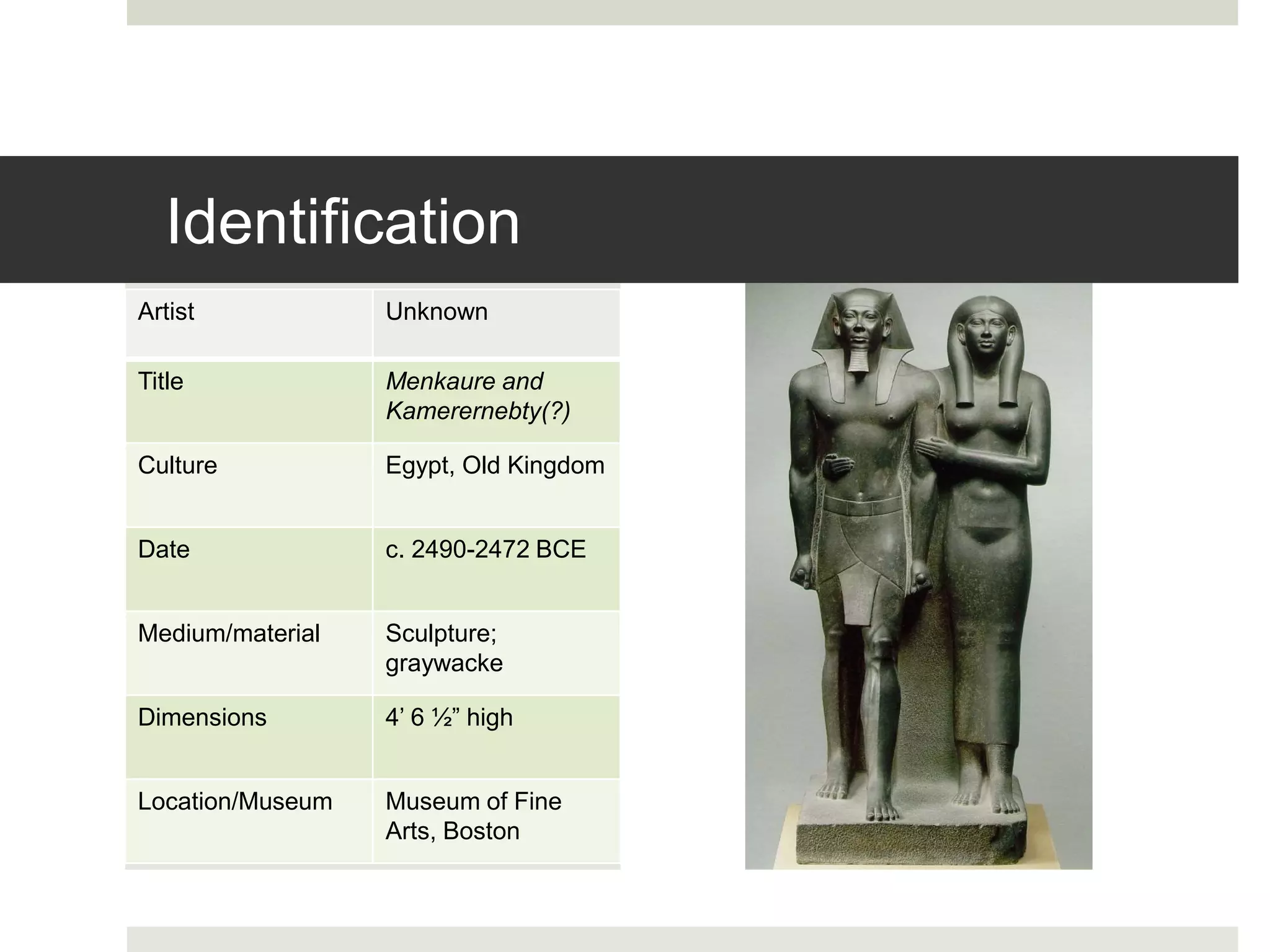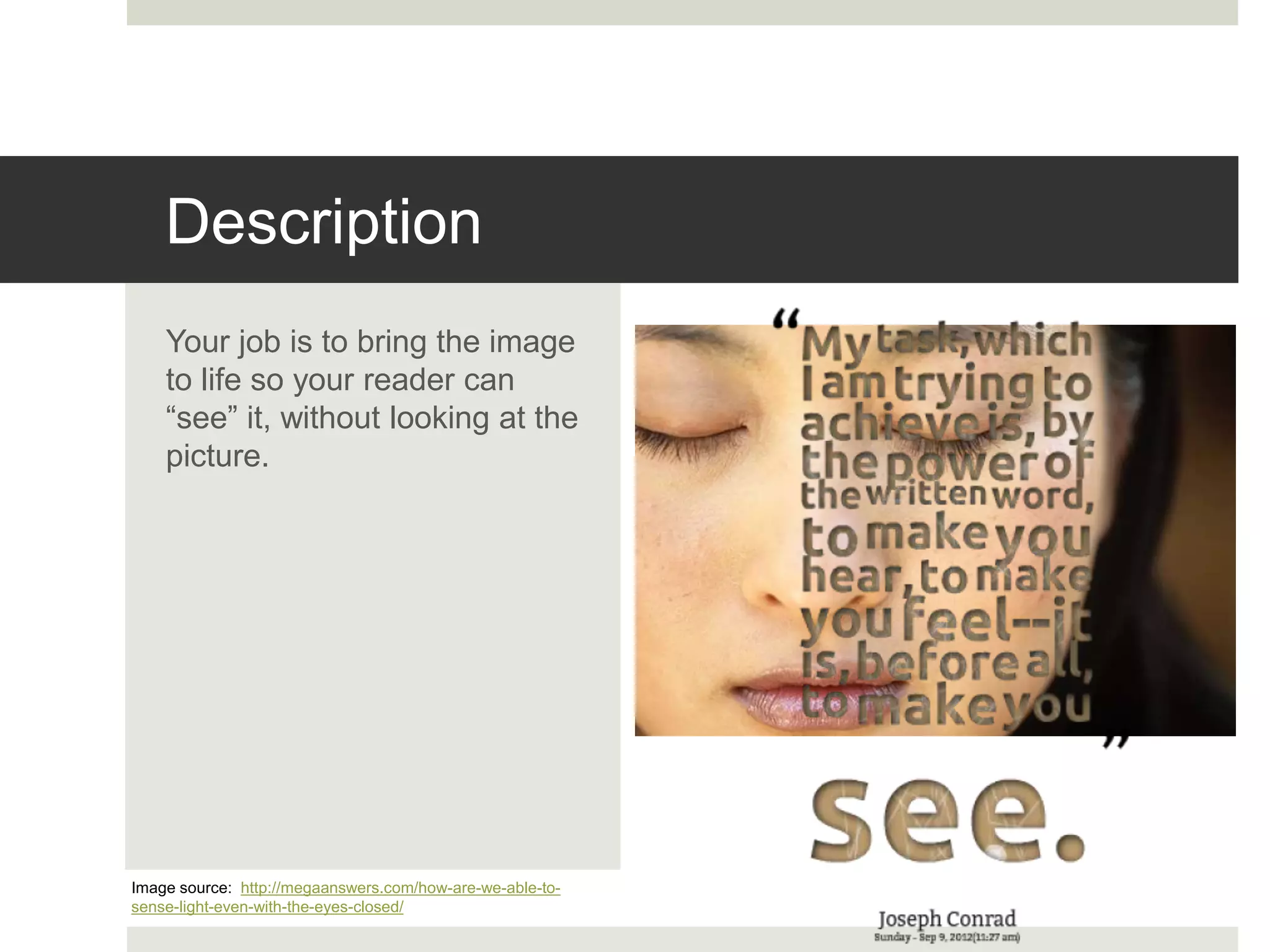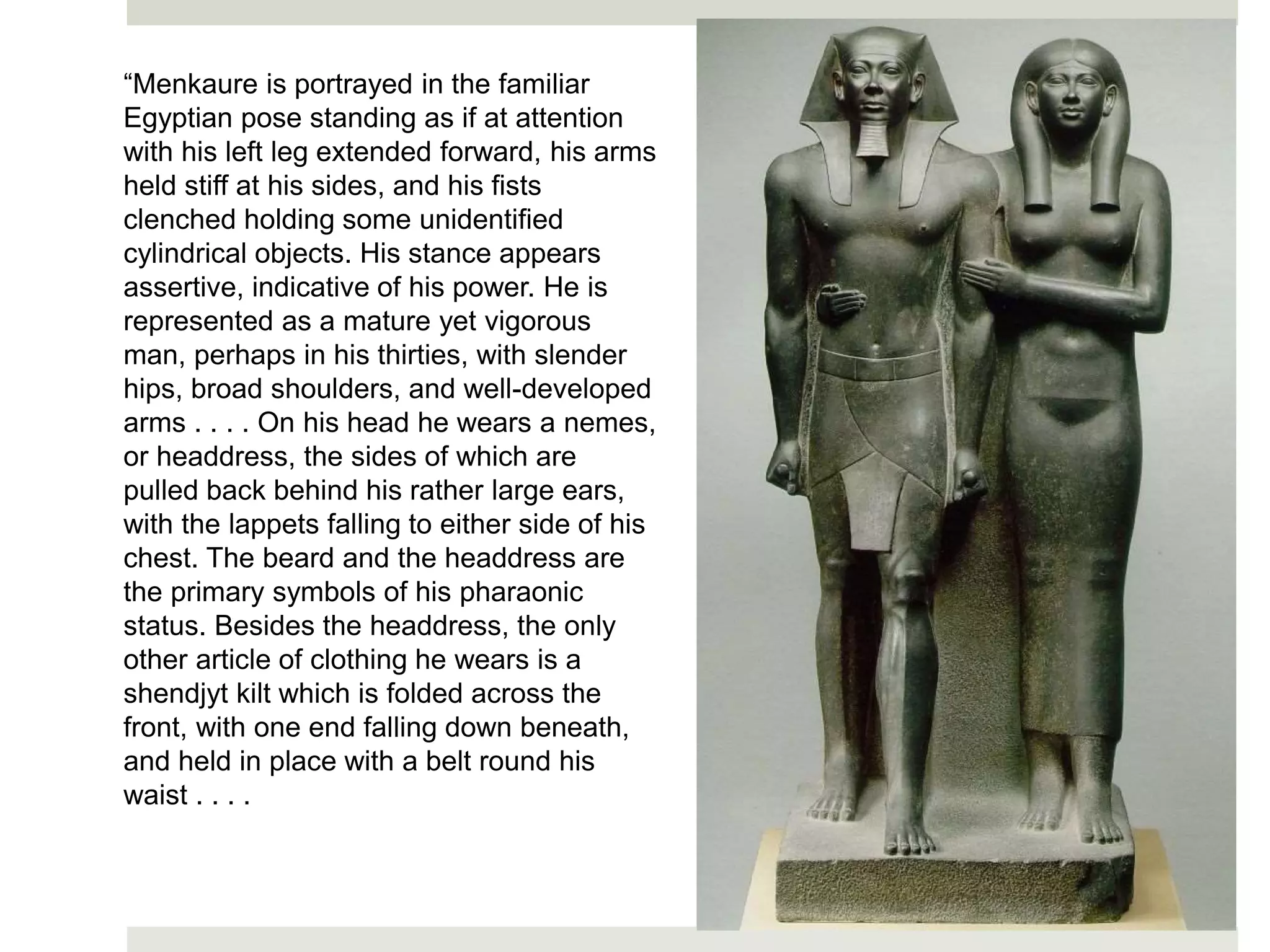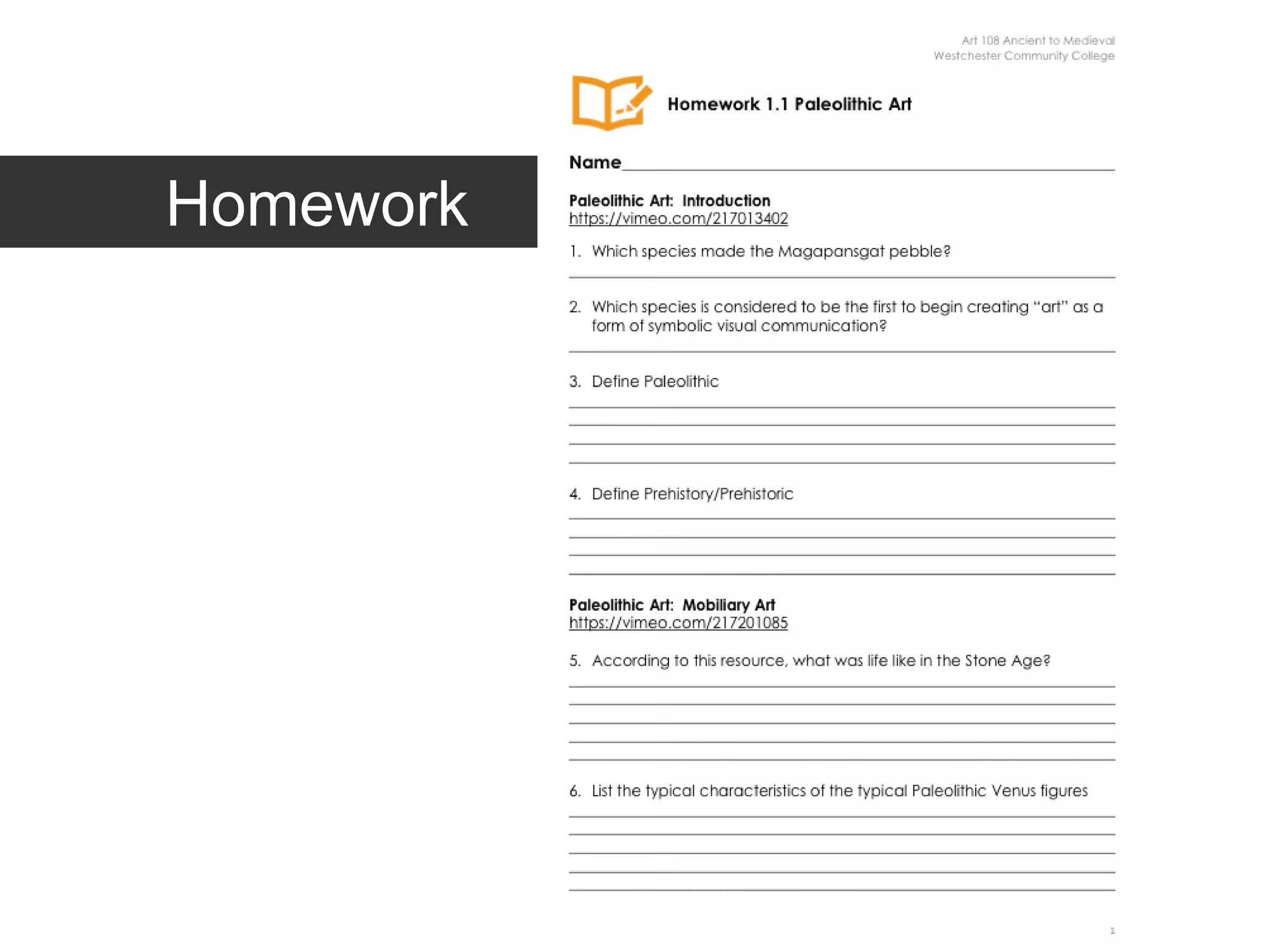The document provides an overview of what art history is as an academic discipline. It explains that art historians study objects and artifacts in order to understand how they were made and why, placing them within their proper historical and cultural context. The document outlines several methods that art historians use to analyze artworks, including visual analysis, identification, description, and determining meaning based on visual evidence in the work. It also discusses how the role of the artist differed in ancient societies compared to more modern concepts of individual creative expression.


